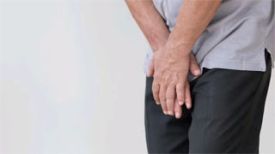
At the beginning of exercise (such as running), there is often a phenomenon of "not catching up with the upper breath", which is due to the physiological inertia of the human body and the "extreme" phenomenon.
The human body's system has inertia, with the internal organs being more inert and the muscles being less inert. Therefore, when they start working at the same time, the efficiency of the former is low, making it difficult to provide sufficient oxygen and nutrients for the latter, and it is also difficult to timely eliminate the metabolic waste produced by the latter (lactic acid, carbon dioxide, etc.) from the body, resulting in the phenomenon of "extreme".
The occurrence time of the "extreme" phenomenon varies among people with different physical qualities. People who do not exercise regularly will experience the "extreme" phenomenon early and for a long time, accompanied by breathing difficulties, poor mood, heavy movements, muscle soreness, and other symptoms. There are two main reasons for this phenomenon:
One reason is that aerobic metabolism is weak, and muscles cannot absorb more oxygen to maintain physical exertion. A good way to enhance aerobic capacity is to engage in long-distance jogging. The key to enhancing aerobic capacity is to jog at a pace that allows people to chat while running. In other words, do not let the speed be so fast that you can't catch your breath.
The second is shallow breathing. If we only inhale air into the upper half of the lungs, there won't be enough oxygen in the blood. At this point, we need to improve our breathing style by consciously taking deep breaths and inhaling air into the lower half of our lungs.
Not being able to catch breath while running is not because there is not enough air inhaled, but because there is not enough gas exhaled. Only by completely exhaling the useless gas at the bottom of the lungs can a large amount of fresh oxygen be inhaled to meet the body's needs.
In addition, when beginners first start running, excessive muscle tension can cause the lungs to transport oxygenated blood to muscle cells, which can also lead to difficulty breathing during running. Learning to relax while running can help alleviate breathing difficulties and improve running efficiency.
It is not advisable to eat too much before running, as a full stomach can have a certain compression effect on organs, making breathing less smooth. Exercise immediately after meals, as blood supplies both the digestive system and muscle tissue, which can easily lead to digestive dysfunction, indigestion, and affect exercise effectiveness, increasing the probability of respiratory distress.
How to improve the phenomenon of chest tightness and shortness of breath
To improve this phenomenon, we need to consciously strengthen training in the following aspects during daily exercise.
Firstly, pay attention to the breathing pattern. In the early stages of running, it is not advisable to excessively pursue speed and distance, but rather to consciously cultivate good breathing habits. When running slowly, we should develop the good habit of inhaling through the nose, because inhaling through the nose can effectively filter out dust and other particles in the air, and also provide stable oxygen for our body; With the increase of running distance and intensity, the demand for oxygen in the human body also increases rapidly. At this time, it is necessary to use both the mouth and nose to inhale, and the mouth to exhale. Both inhalation and exhalation should be slow, thin, and long, avoiding rapid and large mouth breathing. If there is shortness of breath or difficulty breathing, it indicates that the exhalation process is too short and there is still a lot of carbon dioxide trapped in the lungs, resulting in a decrease in the amount of fresh air inhaled. The solution is to deliberately increase the exhalation volume and prolong the exhalation time, and exhale through the mouth.
Secondly, it is important to maintain a good breathing rhythm that matches well with the running rhythm, which is beneficial for deepening the depth of breathing.
Finally, learn to take deep breaths. After a long period of aerobic exercise, it is necessary to take deep breaths, otherwise you may feel shortness of breath, chest tightness, and difficulty breathing. Some people have enough depth when inhaling, but not enough depth when exhaling, which can cause the body to feel oxygen deficiency. Only when the exhaust gas is discharged, the negative pressure in the lungs will increase, which not only saves effort during inhalation, but also increases the amount of inhalation.


